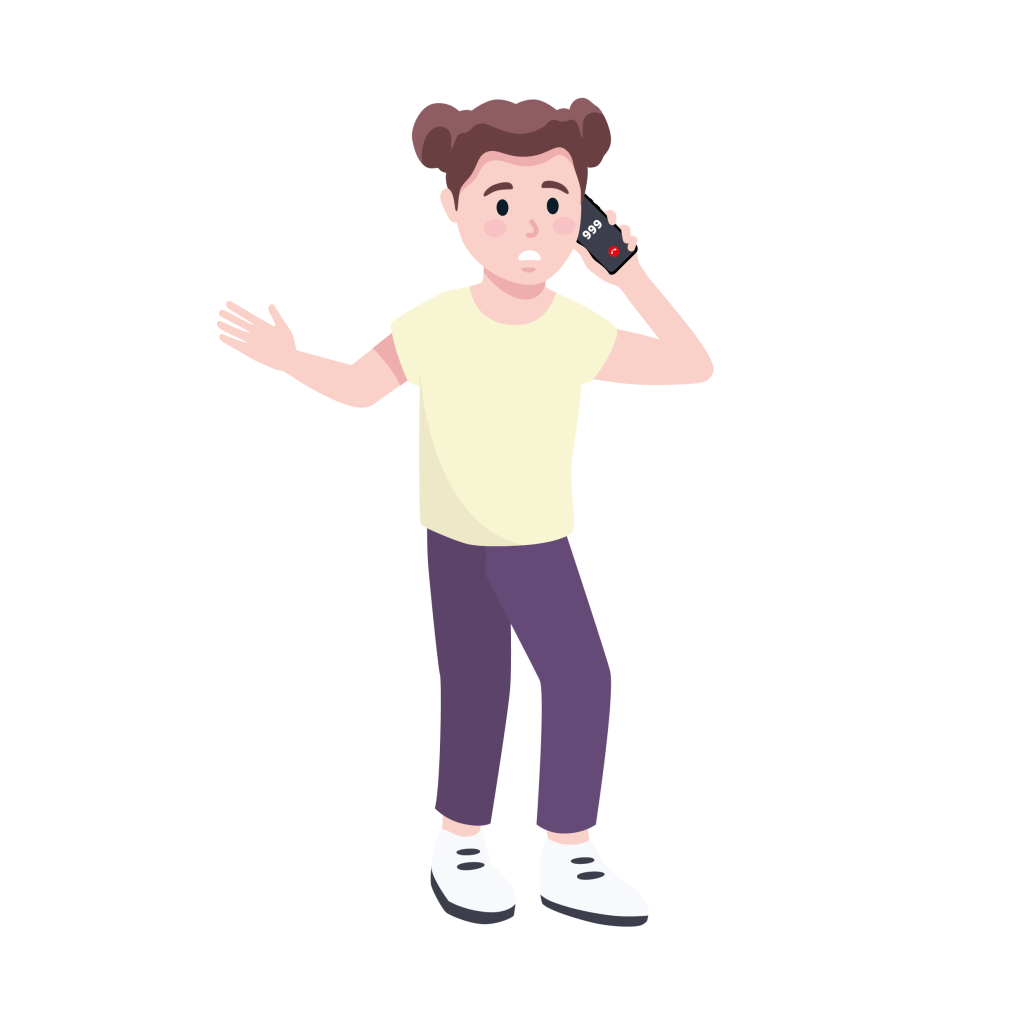When and how to call for help
Pupils will learn the difference between non serious and serious incidents. They will understand that the ambulance service is for situations where they think someone’s life is at risk, and will know when to contact the ambulance service for help and how to do so. If an ambulance is not required, they will have a better understanding of the other NHS services available and how they can help, and be more aware of how they can help themselves.
Ask each question in turn below, to engage with the children to see how they answer.

Question – If you feel poorly, where can you get help from?
- Your mum or dad can look after you at home
- What do you think this person does? (Show a picture of the following – pharmacist/doctor/ambulance staff/nurse at hospital)
- You can go and see the pharmacist for medicine if you feel poorly
- You can go and see the doctor
- You can call an ambulance
- You can go to the hospital
Question – How do you know when you should call these people?
- What would you do if you had a cold?
- What would you do if you had a grazed knee?
- This is a little sick
- What would you do if you couldn’t get someone to wake up?
- This is a big sick.
Question – Who can help you if you are little sick?
- Mum and dad
- The pharmacist (show a picture), where will you find them (show a picture)?
- The doctor (show picture) where can you see a doctor?
- In the doctors surgery (show a picture)
- They can come and see you at your house if you are too poorly to go to the doctors surgery, the walk-in-centre or the urgent care centre
Question – Who can help you if you are big sick?
- The ambulance
Question – What telephone number can you call to get help when you are big sick?
- 999
Big sick or little sick exercise
In this next section you will need to mark up areas labelled ‘big sick’ or ‘little sick’ with enough space to allow the children to move around. Give the children a scenario, either a ‘big sick’ or a ‘little sick’ and get the children to decide which it is by getting them to move to the correct area. Once the children have decided, explain to them if it was big sick or little sick, and why.
- Unable to wake someone up – big sick
- Sore ear – little sick
- Grazed knee – little sick
- Very bad pain in your chest – big sick
- A bad cold – little sick
Serious injury or illness
Pupils will learn how to identify a paramedic from another member of the emergency services. Their understanding of the roles of ambulance service resources will increase.
The ambulance
- What is my job?
- How do you know?
- What colours can you see on an ambulance?
Show the children: green uniform, hi-vis jackets, ambulance.
What happens when you call
Pupils will understand that the location of the emergency is the most important piece of information to the ambulance service, closely followed by the problem/what has happened. They will be aware that more information about the emergency means the ambulance service will be able to respond with the most appropriate resources in the most appropriate timeframe. They will understand that the sickest patients will be dealt with as a priority and that there are only a limited number of resources so they must be used appropriately.
Show the children the team 999 video which shows there are lots of different types of ambulance.
What does the ambulance service need to know?
- Get the children to listen to a 999 call (audio of a 999 call – unconscious person)
- Ask pupils to design a poster all about themselves with their name, address and date of birth.
How can you find out where you are?
Get the pupils to think about where they may be if they need to ring for an ambulance.
- At home
- At their grandparents house
- At school
- Outside
How would a pupil find out where they are, if they don’t already know the address?
- A letter in the house?
- Another person in the house or school
- A passerby
How the Ambulance help when you are ‘big sick’?
Pupils will have a better understanding of the types of equipment found in ambulances. They will learn that ambulance crews are highly skilled and can make decisions about the most appropriate care destinations for their patients.
What equipment do you think the ambulance crew carries?
Why does the ambulance crew wear gloves?
Where would an ambulance crew take a sick patient?
- Show the children: Kit bag, bandages, oxygen mask and cylinder
- Ask the pupils to bandage a friends arm or ask them to help fix someone following imagined injuries.
How you can help
Pupils will learn how their actions can make a difference and really help a patient. They will understand that keeping calm is important and getting help from adults/professionals is vital.
Discuss danger, response, shouting for help, and how they can help when they can’t wake someone up /a person is unresponsive.
How can you help before the ambulance service arrives?
Why is it important to check for danger?
Get the children to put a friend in the recovery position.
Homework
Make a poster/colouring about what you have learnt today.